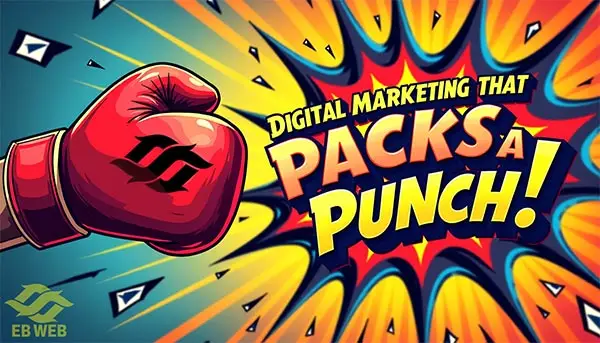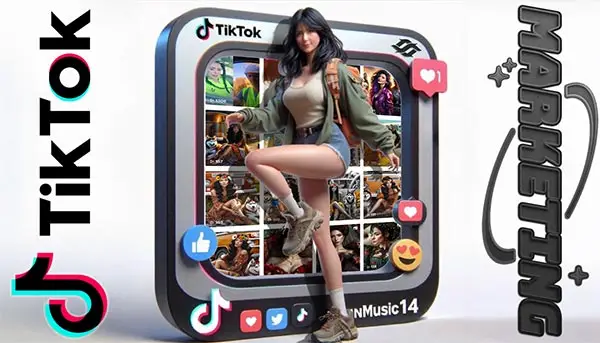
Top Website Design Trends: Enhancing User Experience with Minimalist, Responsive, and Interactive Elements

Embrace the Future: Exploring the Top Website Design Trends of Today
In the ever-evolving world of web design, staying ahead of the curve is essential. As technology continues to advance, so do the trends and techniques that shape the online landscape. From bold colors and innovative layouts to immersive experiences and interactive elements, the top website design trends of today are pushing the boundaries of creativity and functionality. In this article, we'll explore the cutting-edge trends that are revolutionizing the way we experience the web, and how you can incorporate them into your own designs to create a truly unforgettable online presence. So, buckle up and get ready to be inspired by the latest and greatest in website design!
How can minimalist design elements enhance user experience on a website?
How Minimalist Design Elements Enhance User Experience on a Website
Minimalist design has been a popular trend in web design for a while now, and for good reason. It not only looks clean and modern, but it also enhances the user experience. Here are some ways minimalist design elements can improve the user experience on a website:
- Focus on the essentials: By stripping away unnecessary elements, minimalist design allows the most important content and features to stand out. This makes it easier for users to find what they're looking for without being overwhelmed by clutter.
- Improved loading times: Minimalist design often means fewer images, animations, and other heavy elements that can slow down a website's loading time. This can lead to a smoother and faster user experience, which is crucial for retaining visitors.
- Enhanced readability: Clean, simple typography and ample white space can make content easier to read and digest. This is especially important for websites that rely heavily on text, such as blogs or news sites.
- Mobile responsiveness: Minimalist design lends itself well to responsive web design, making it easier to create a seamless experience across different devices. This is essential in today's mobile-driven world.
- Clear calls to action: With fewer distractions, minimalist design can make calls to action more prominent and effective. This can lead to higher conversion rates and a better overall user experience.
Overall, minimalist design can help create a more intuitive, efficient, and enjoyable experience for website visitors. By focusing on what truly matters and eliminating the unnecessary, designers can create websites that are both visually appealing and highly functional.
What role does responsive design play in ensuring a seamless browsing experience across all devices?
The Importance of Responsive Design for a Seamless Browsing Experience
In today's digital age, the use of multiple devices to access the internet has become the norm. From smartphones and tablets to laptops and desktops, people expect to have a seamless browsing experience regardless of the device they are using. This is where responsive design comes into play.
Responsive design is a web design approach aimed at creating sites that provide an optimal viewing and interaction experience across a wide range of devices. It ensures that a website can adapt to the screen size, platform, and orientation of the device being used, resulting in a consistent and user-friendly experience for all visitors.
So, what role does responsive design play in ensuring a seamless browsing experience across all devices? Let's break it down:
- Consistency: Responsive design ensures that the layout and content of a website remain consistent across different devices. This means that users can easily navigate the site and find the information they need, regardless of the device they are using.
- Improved User Experience: By adapting to the user's device, responsive design enhances the overall browsing experience. It eliminates the need for excessive zooming, panning, and scrolling, making it easier for users to engage with the content.
- SEO Benefits: Responsive design can also have a positive impact on a website's search engine optimization (SEO) efforts. Google prioritizes mobile-friendly websites in its search results, so having a responsive design can improve a site's visibility and ranking.
- Cost-Effectiveness: Instead of creating and maintaining separate websites for different devices, responsive design allows for a single site that can adapt to all devices. This can save time and resources in the long run.
In conclusion, responsive design is crucial for ensuring a seamless browsing experience across all devices. It not only meets the needs and expectations of modern users but also offers numerous benefits for website owners. By embracing responsive design, you can create a website that is accessible, user-friendly, and future-proof.
How can the use of bold and vibrant colors make a website stand out and leave a lasting impression on visitors?
How Bold and Vibrant Colors Can Make Your Website Stand Out
When it comes to creating a website that leaves a lasting impression on visitors, the use of bold and vibrant colors can make all the difference. Colors have the power to evoke emotions, convey messages, and create a memorable experience for users. Here are a few ways in which the use of bold and vibrant colors can make your website stand out:
- Grab Attention: Bold and vibrant colors are eye-catching and can immediately grab the attention of visitors. By using these colors strategically, you can draw users in and encourage them to explore your website further.
- Create a Memorable Brand Identity: Consistently using bold and vibrant colors throughout your website can help create a strong brand identity. When visitors associate your brand with specific colors, it becomes easier for them to remember and recognize your website.
- Evoke Emotions: Colors have the power to evoke emotions and influence how visitors feel about your website. By choosing the right combination of bold and vibrant colors, you can create a positive and engaging user experience.
- Stand Out from the Competition: In a sea of websites, using bold and vibrant colors can help your website stand out from the competition. It can make your website more memorable and differentiate it from others in your industry.
Overall, the use of bold and vibrant colors can make a website more visually appealing, memorable, and engaging for visitors. When used thoughtfully, these colors can help create a unique and impactful online presence for your brand.
What are the benefits of incorporating interactive elements such as animations and micro-interactions into website design?
The Benefits of Incorporating Interactive Elements into Website Design
When it comes to website design, incorporating interactive elements such as animations and micro-interactions can greatly enhance the user experience. These elements not only make the website more visually appealing but also improve user engagement and interaction. Here are some of the key benefits of incorporating interactive elements into website design:
- Enhanced User Engagement: Interactive elements capture the user's attention and encourage them to explore the website further. This can lead to increased time spent on the site and a higher likelihood of conversion.
- Improved User Experience: Animations and micro-interactions can make the user experience more intuitive and enjoyable. They can provide visual feedback, guide users through the website, and create a sense of delight and satisfaction.
- Increased Brand Perception: A website with interactive elements conveys a sense of modernity and innovation, which can positively impact the perception of the brand. It shows that the brand is forward-thinking and cares about providing a seamless and engaging experience for its users.
- Storytelling and Emotion: Animations can be used to tell a story or evoke emotions, creating a more memorable and impactful experience for the user. They can help convey the brand's message and values in a more compelling way.
- Mobile Optimization: Micro-interactions are particularly effective for mobile optimization, as they provide a tactile and responsive experience that is well-suited for touchscreens.
Overall, incorporating interactive elements into website design can have a significant impact on user engagement, brand perception, and overall user experience. It's a powerful way to make a website more dynamic, memorable, and effective.
How can the use of asymmetrical layouts and unconventional grid structures create a visually dynamic and engaging website?
Unleashing Creativity: The Power of Asymmetrical Layouts and Unconventional Grid Structures
When it comes to web design, the possibilities are endless. Gone are the days of rigid, symmetrical layouts and predictable grid structures. Today, designers are embracing asymmetry and unconventional grids to create visually dynamic and engaging websites that captivate and inspire.
So, how exactly can the use of asymmetrical layouts and unconventional grid structures elevate a website's design?
- Breaking the Mold: Asymmetrical layouts and unconventional grid structures break free from the constraints of traditional design, allowing for more creativity and originality. This departure from the norm immediately captures the attention of visitors and sets the website apart from the competition.
- Visual Interest: The use of asymmetry creates visual interest and movement, drawing the eye in unexpected directions and keeping visitors engaged. Unconventional grid structures add an element of surprise and intrigue, making the browsing experience more exciting and memorable.
- Embracing Individuality: By embracing asymmetrical layouts and unconventional grid structures, a website can convey a sense of individuality and personality. This non-conformist approach communicates a bold and innovative brand identity, making a lasting impression on visitors.
- Enhanced User Experience: When used thoughtfully, asymmetrical layouts and unconventional grid structures can enhance the user experience by guiding the visitor's attention and creating a natural flow through the website. This can lead to increased engagement and longer browsing sessions.
In conclusion, the use of asymmetrical layouts and unconventional grid structures has the power to transform a website from ordinary to extraordinary. By breaking the mold, creating visual interest, embracing individuality, and enhancing the user experience, designers can unleash their creativity and captivate audiences in new and exciting ways.
What impact does the integration of video and immersive multimedia content have on capturing and retaining the attention of website visitors?
The Impact of Video and Immersive Multimedia Content on Capturing and Retaining Website Visitors' Attention
As the digital landscape continues to evolve, the integration of video and immersive multimedia content has become increasingly important for capturing and retaining the attention of website visitors. The use of these dynamic and engaging elements can have a significant impact on user experience and ultimately drive higher levels of engagement and conversion. Here are a few ways in which the integration of video and immersive multimedia content can make a difference:
- Visual Appeal: Video and immersive multimedia content have the power to captivate and engage visitors in a way that static images and text simply cannot. The use of vibrant visuals, motion graphics, and interactive elements can create a more visually appealing and memorable experience for users.
- Storytelling: Video content allows for storytelling in a way that resonates with audiences on a deeper level. Through the use of narrative, emotion, and music, brands can connect with visitors on a more personal and emotional level, making a lasting impression.
- Information Retention: Studies have shown that people are more likely to retain information presented in video format compared to text. By integrating video and immersive multimedia content, websites can effectively convey their message and key information in a more digestible and memorable format.
- Engagement and Interaction: Immersive multimedia content, such as 360-degree videos and virtual reality experiences, can provide visitors with an interactive and engaging experience that encourages them to explore and spend more time on the website.
In conclusion, the integration of video and immersive multimedia content can have a profound impact on capturing and retaining the attention of website visitors. By leveraging these dynamic elements, brands can create a more visually appealing, engaging, and memorable experience that resonates with audiences and drives higher levels of user engagement and conversion.
In conclusion, the world of website design is constantly evolving, and staying ahead of the curve is essential for creating a memorable and impactful online presence. By embracing the top website design trends, such as bold colors, immersive storytelling, and interactive experiences, you can elevate your website to new heights and captivate your audience in ways you never thought possible. So, don't be afraid to push the boundaries and experiment with new ideas. Let your creativity shine and watch as your website becomes a true work of art. Remember, the possibilities are endless, and the future of website design is in your hands. Embrace the trends, unleash your imagination, and create a website that leaves a lasting impression.





